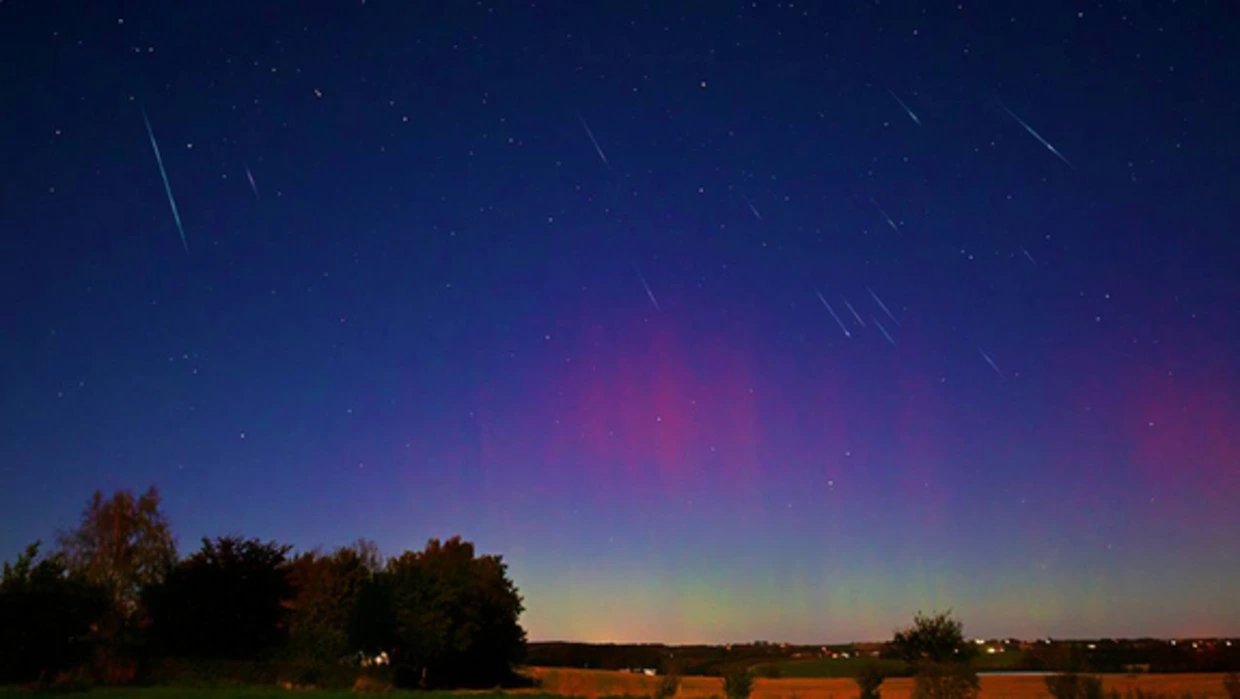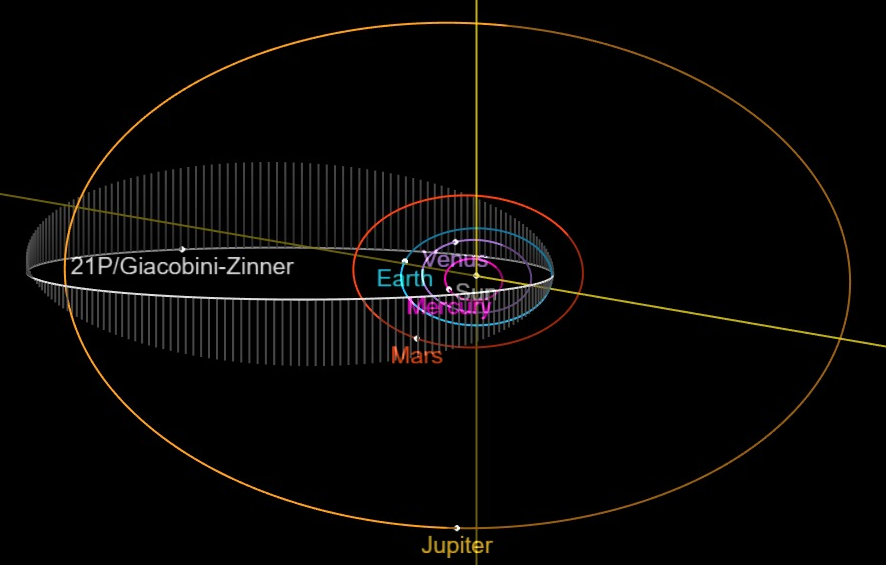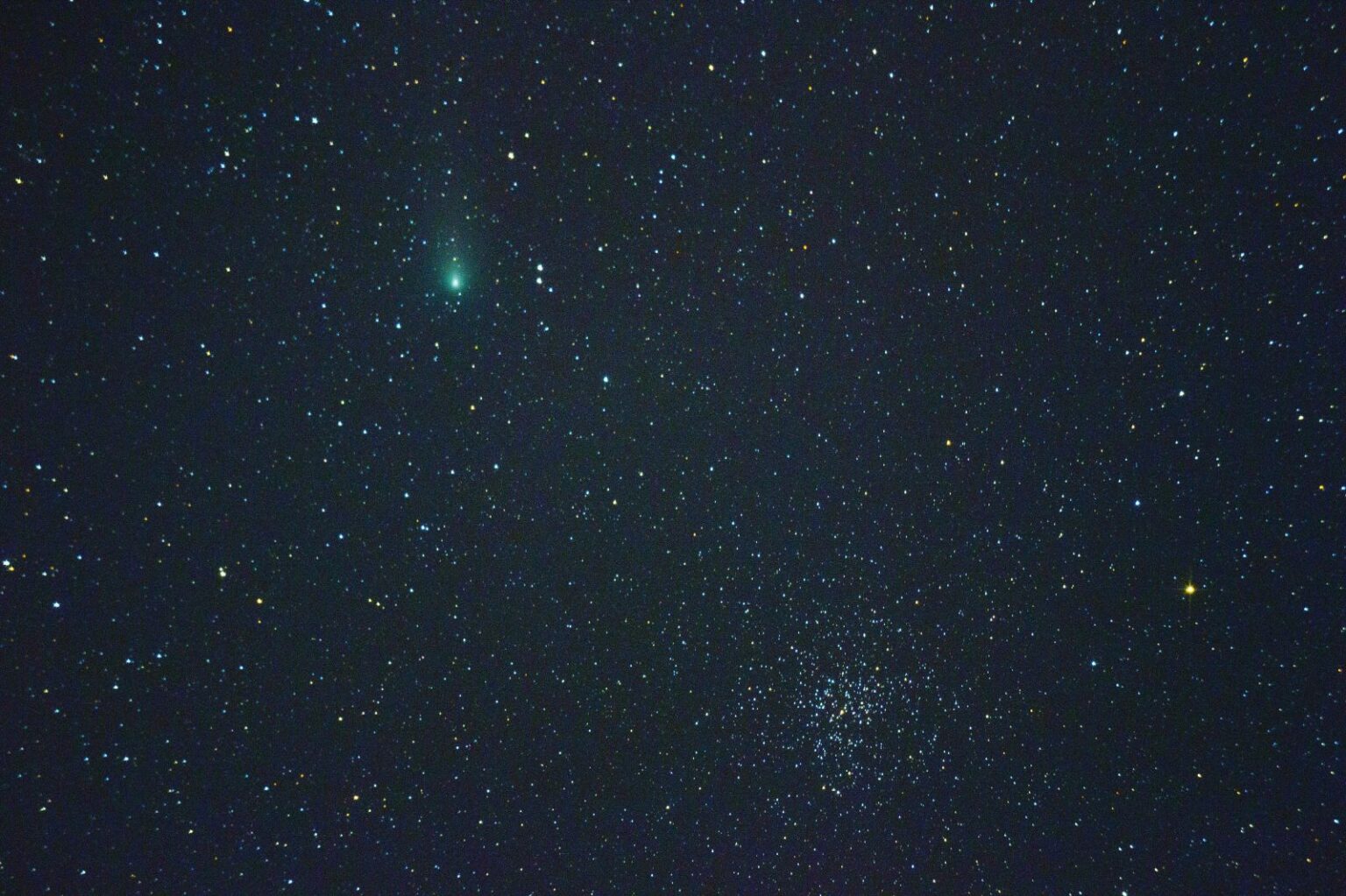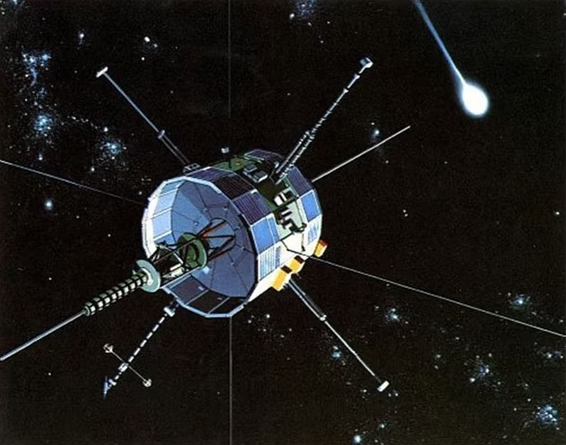In October 1898, a small comet “inadvertently” approached Jupiter, which by its gravity changed its orbit in such a way that it was able to approach the Earth. On December 20, 1900, this comet was seen by the French astronomer Michel Giacobini — thus, it became the last short-period comet discovered in the XIX century. And in 1915, several scientists suggested that it could be the “source” of a meteor shower with a radiant in the constellation Draco and a peak of activity around October 9. In the same year, these predictions were confirmed by observations. So the stream of Draconids was opened.

The “parent” comet of the stream for almost 13 years, these are the next two revolutions, was in the status of lost, but in October 1913 it was rediscovered by German astronomer Ernst Zinner, and it finally got its current name — Giacobini-Zinner comet (21P/Giacobini-Zinner). Its appearance in 1920 was not observed due to the unfavorable position relative to the Earth and the Sun, but in 1926 the “tailed star” was found according to preliminary calculations. Seven years later, the conditions for its observations were even more favorable, but most of all scientists were surprised by the meteor shower associated with it: on October 9, 1933, it gave the inhabitants of the Northern Hemisphere of the Earth a real shower with a capacity of up to two thousand meteors per hour.

The same powerful meteor shower was observed in 1946, but it was no longer unexpected: shortly before it, on September 20, comet Giacobini-Zinner approached the Earth at a distance of 0.258 AU (38.6 million km). It was the closest rapprochement with it since the opening. In areas with a dark sky, it could then be observed with the naked eye for some time. Obviously, our planet that year passed through a fairly dense part of the cloud of dust particles ejected by the comet.
The next “visit” of the Giacobini-Zinner comet in 1953 again turned out to be unfavorable, but since 1959 it has been observed in every return, and all of them are accompanied by an activation of the Draconid shower. If in “normal” years its maximum power does not exceed 30 meteors per hour, then in 1985, for example, it reached two hundred. And no wonder: that year the comet passed at a distance of 0.467 AU (69.9 million km) from Earth. A surprise was the surge in activity on October 9, 1998, when many observers reported triple-digit figures. This meant that the stream gradually evolves — independent “clouds” of dust particles appear in it, which move in their own orbits independently of the comet nucleus. For the first time in history, humanity has had the opportunity to study these processes using the example of a meteor swarm that has not yet turned hundreds of years old, that is, by the standards of the Solar System, it is just a baby.
Another unexpected “flash” of Draconids occurred in October 2011, five months before the passage of the comet Giacobini-Zinner perihelion — the closest point of the orbit to the Sun. Then, at the maximum, their hourly number exceeded 300. Finally, in 2018, after the passage of the comet at a distance of 0.392 AU (58.6 million km) from Earth, the activity of the stream exceeded 500 meteors per hour. But in October of the following year, it turned out to be slightly smaller, which also came as a surprise to astronomers to some extent.

The Giacobini-Zinner comet is quite interesting in itself. It is classified as a potentially dangerous object: since it regularly approaches Jupiter, its gravity can change the cometary orbit in such a way that it will begin to pass in close proximity to our planet, having the opportunity to collide with it. It was this “tailed star” that became the first small body of the Solar System to be studied from a relatively short distance by an automatic apparatus — on September 11, 1985, the ICE probe (International Cometary Explorer) approached it by 7800 km. Since it was not equipped with cameras, scientists were unable to obtain images of the comet nucleus, but according to later infrared imaging, its size is now estimated at about 2 km. Valuable information about this comet can also be obtained by analyzing meteor observations.

Draconids are one of the most convenient meteor showers to observe in our latitudes. Its activity is limited to a fairly short period from October 5 to October 11, during this period in the evenings its radiant is at an altitude of about 60° and then rises to the zenith during the night. Unfortunately, this year the maximum activity coincides with a full moon, and a bright Moon will not allow seeing weak meteors, which make up the vast majority in this shower. In addition, the Giacobini-Zinner comet is now in a remote part of its orbit from the Sun, and most forecasts do not imply significant activation of the Draconids. Its next approach to Earth (up to a distance of 0.437 AU) is expected on September 15, 2058.
Follow us on Twitter to get the most interesting space news in time
https://twitter.com/ust_magazine

